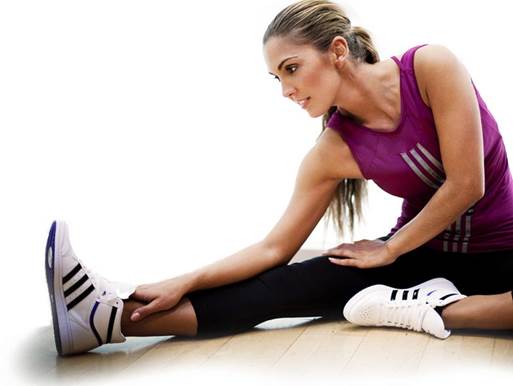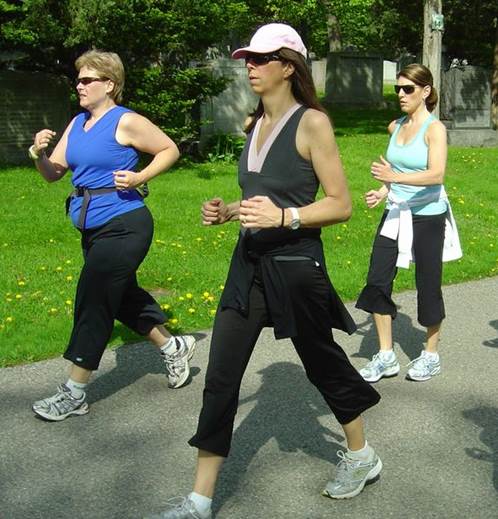Unlike other holidays, breaks from exercise
generally last longer than you'd like and the souvenirs they come with are far
worse than a novelty fridge magnet. You know how it goes: a couple of missed
workouts soon snowball into months of no workouts and suddenly you can't button
your favorite jeans. In fact, research shows that body fat, weight and waist
size can rise and fitness levels can dip after just a five-week hiatus.

Unlike
other holidays, breaks from exercise generally last longer than you'd like -
and the souvenirs they come with are far worse than a novelty fridge magnet.
But now summer's on the horizon, it's the
perfect time to make a comeback. Whatever's been keeping you on the sidelines -
an injury, a new relationship, the small issue of bringing new life into the
world, or just a lingering 'can't be bothered' feeling - this expertly tailored
plan will help get you back in shape and then some. "When you get back
into training you'll be weak and tight in a lot of places," says personal
trainer Zack Cahill, director of Aegis Training in London. "You need to
regain the basics of strength and mobility before doing high-impact exercise
like running." That's why this plan has varying break-in periods based on
how long you've been off exercise, from a few weeks to (whisper it) a few
years. And because we know the roadblocks to exercise are many and varied,
we've found expert solutions to your particular physical, psychological and
logistical challenges, too. (We're good like that.) No matter where you are
now, the bespoke Plan is your road map to a happier, healthier, hotter body by
the end of the month.
The obstacle: you’ve given into age
When you hit your late thirties (and
beyond) it can get harder to keep the wobble at bay - not least because the gym
seems full of lithe young twenty- something. Motivation hits an all-time low
and the 'sod it' feeling takes over.
Your plan
Walk, don't run
There's no reason you can't get fit and
lean in your forties and fifties, but go about it the right way. "People
run because they think it's easy," says Cahill. "But actually it's an
advanced form of training. You have to be quite mobile and strong in the right
places." Sidestep potential injury and disappointment by building up to
running with the free 5K Runner app, and by doing the cardio workouts on a
machine. "Cycling and cross training are better, lower-impact
options," says Cahill.

There's
no reason you can't get fit and lean in your forties and fifties, but go about
it the right way.
Jump up, tone up
After 45, most women who don't lift weights
start losing muscle, mostly from the lower body, which slows your metabolism
right down. That means the fast-twitch muscle fibers - the stringy part
responsible for generating power are at the highest risk. To maintain your
muscle power, think fast, explosive movements. Once you've done 2-3 weeks of
this plan, you can add these jump squats into Program B: stand with feet
shoulder-width apart, knees slightly bent and arms by your sides. Keep your
torso upright, squat down till your thighs are parallel to the floor, then jump
up as high as you can. Land on your toes and repeat till you've done 2-3 sets
of 10-12 jumps.
Lift more, weigh less
As you approach the menopause, staving off
osteoporosis becomes a priority. "Go for heavier weights. That's what
bones love," says exercise physiologist Dr. Belinda Beck. "Rather
than doing 30 reps of a light weight, get the heaviest weight you can lift and
repeat three times." That'll be our handbag, then.
The obstacle: you recently started a family
Intense exercise is usually off-limits for
six weeks after giving birth. After that, a cocktail of sleep deprivation,
stress and milk-laden boobs tend to keep you firmly on the sofa.
Your plan
Manage your middle
Your core - the 29 small, interwoven
muscles that hold you up - has taken a hammering. To make room for a growing
baby, your rectus abdominis (aka six-pack) stretches down the middle - and can
fully separate in a third of pregnancies. "And in C-sections, surgeons
have to pull your rectus abdominis further apart to allow for the baby to come
out," says Edwina Griffin, a personal trainer who runs the online training
program FitMum. Yep: ouch. It takes around six weeks for your stomach to heal
(longer for Caesareans), so any core work before this does more harm than good.
When you've got the all-clear, add this pelvic tilt to Program A to strengthen
your core and pelvic floor: lie on your back with knees bent and feet resting
on a chair. Exhale, draw your belly button towards your spine and contract your
pelvic floor muscles. Hold for 10-15 seconds and release. Do 10-15 reps.

To
make room for a growing baby, your rectus abdominis (aka six-pack) stretches
down the middle - and can fully separate in a third of pregnancies.
Think big, lose big
Big muscle groups, that is. "When you
come back to training, you want to burn calories, boost metabolism and get
strong. Do that by targeting the bigger muscles of your body. Most of your
program should be full-body movements like squats and lunges, rows and
press-ups," says Cahill. Which is exactly what you get with Programs A and
B, handily.
Swim to slim
"The energy levels of new mums can
fluctuate, so drop the intensity if you're burnt out," says Cahill. If
doing the cardio element of this plan seems less attractive than a date with
Chris Brown, try it in a swimming pool. "It's a low-impact workout that uses
the water's resistance to build strength, while the water supports your pelvis
and helps with circulation and swelling," says Griffin. Better book that
Aquarobics class.

If
doing the cardio element of this plan seems less attractive than a date with Chris
Brown, try it in a swimming pool.